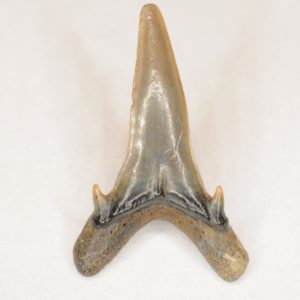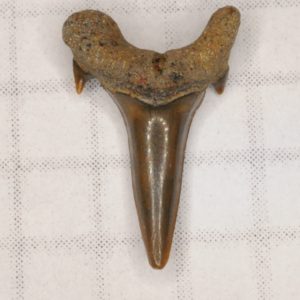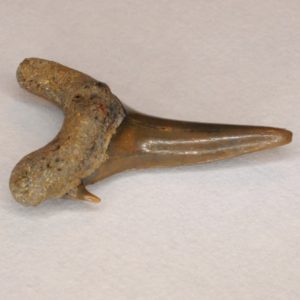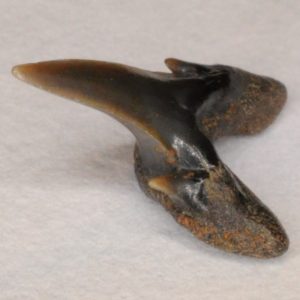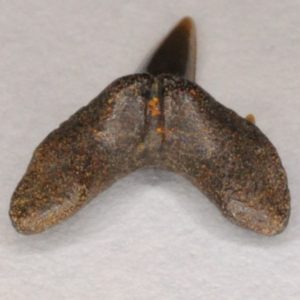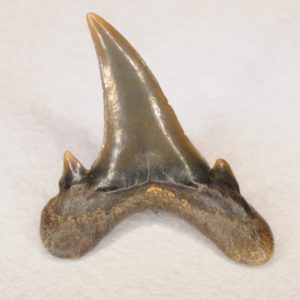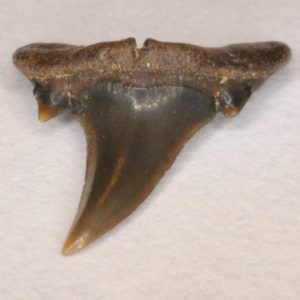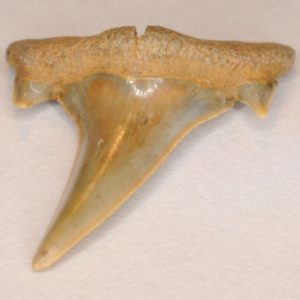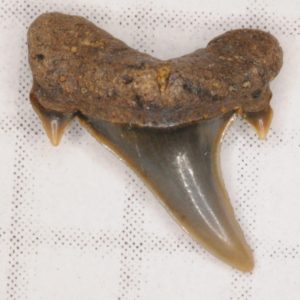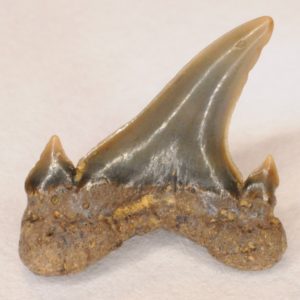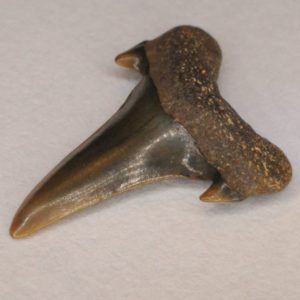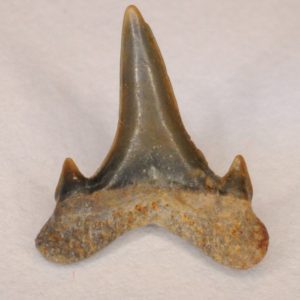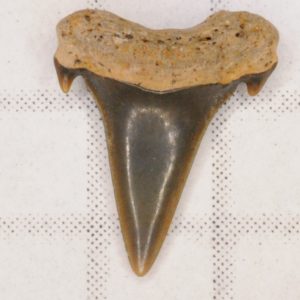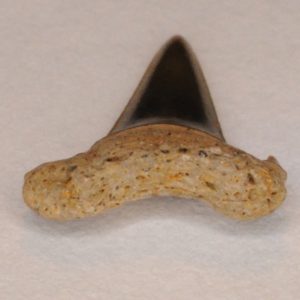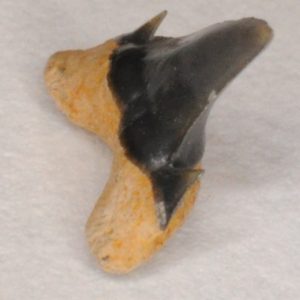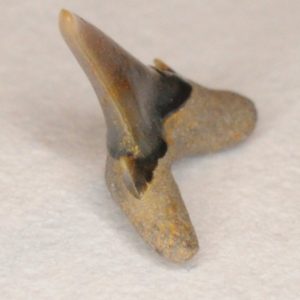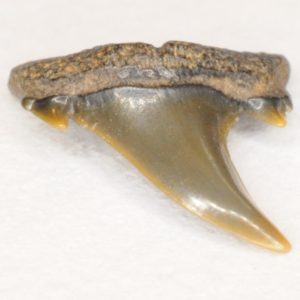NJfossils.com
"Fossils aren't a hobby, they're a lifestyle."Sand tiger (Carcharias samhammeri aka Odontaspis samhammeri)
Age – Late Cretaceous; Commonality – Less Common; Size – average: 5/8 inches, max: 7/8 inches
Carcharias samhammeri is one of two Carcharias sp. found here. This species has a smooth crown surface with no striations. The crown curves lingually. The root has a large lingual protuberance, especially on anterior teeth, and there is a large nutrient grove. Lateral and posterior teeth are smaller and curved, with posteriors being a little smaller than laterals. Carcharias samhammeri teeth can resemble juvenile anterior goblin shark teeth. One way to tell them apart from goblins is by the way the enamel on the base of their crowns curves around the root arch. In goblins the root margin is flat.
First Lower Anterior (Parasymphyseal) Tooth
Parasymphyseal C. samhammeri teeth are a bit rarer than the teeth from other jaw positions. The shark possessed two parasymphyseals on the lower jaw, one to the left of the symphysis, and one to the right. Unlike the anterior teeth, parasymphyseals have their largest root lobe pointing away from the symphysis.
Anterior Teeth
This is a lower anterior (likely an a2) C. samhammeri.
This tooth is another lower anterior (likely an a1) C. samhammeri. Lower anteriors have a smaller angle between their root lobes than upper anteriors, which makes their roots have a “U” shape. They also have more erect crowns (especially a1 teeth).
This tooth is an upper anterior (likely an a2 or a3). Upper anteriors have a broader angle between the root lobes and are more distally slanted.
This is one of my largest upper anteriors of this species at 13/16 inches.
Intermediate Tooth
Intermediate teeth are present only in the upper jaw, between the last anterior tooth and the first lateral tooth. They are normally (though not always) smaller than the neighboring teeth and are usually more slanted distally than the anterior teeth and first several lateral teeth. In C. samhammeri, the intermediate teeth are smaller than the anterior teeth (other than the parasymphyseal, which is about the same size) and first couple lateral teeth. In some other species of sharks the intermediate tooth can sometimes be as large as the neighboring teeth.
Lateral Teeth
This is an upper lateral C. samhammeri tooth. It has a greater width to length ratio and is much more distally curved when compared to anteriors. Upper lateral teeth are broader and more curved than the lower laterals.
This is a massive upper lateral tooth (likely either an L1 or L2). It measures 27/32 inches and is larger than most of my anteriors.
Here is another upper lateral tooth (this one is from further back in the jaw than the tooth above).
This upper lateral is more erect than the others.
This tooth is a lower lateral C. samhammeri. Lower laterals are not as curved as the uppers and are generally smaller.
This lower lateral is similar to the one above.
This lower lateral came from a different tooth file than the two above (likely from a more posterior file).
Posterior Teeth
The upper posterior teeth are even more distally curved than the upper laterals. It seems like C. samhammeri did not possess true lower posterior teeth. The last lower lateral tooth shown can be considered a lower posterior, but in my opinion it is a lower lateral.
This is another upper posterior tooth. It has a different morphology than the posterior tooth above. It is more elongated and has an angled/curved hook-like apex.
This is another upper posterior. It has both primary and secondary cusplets.








